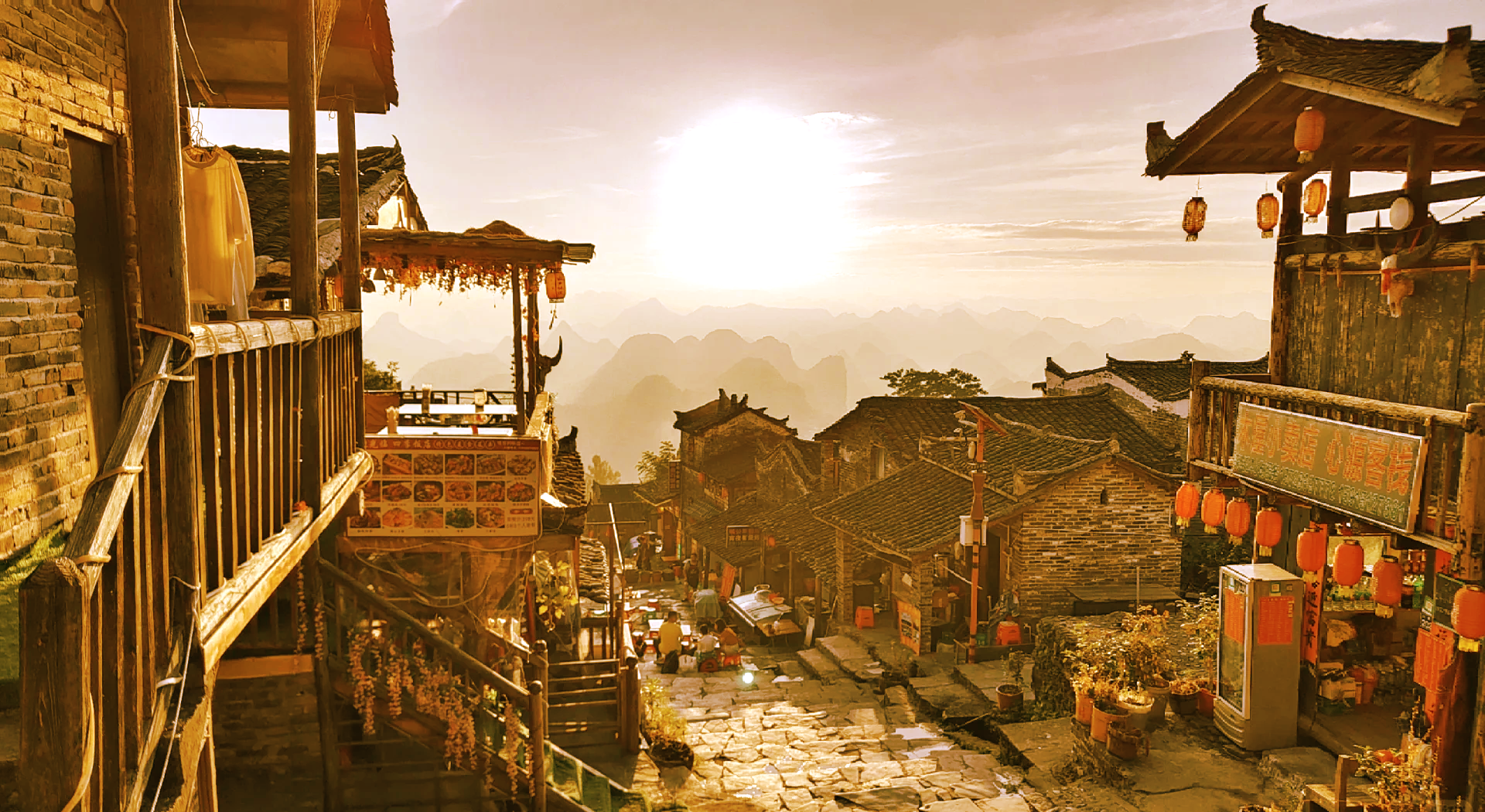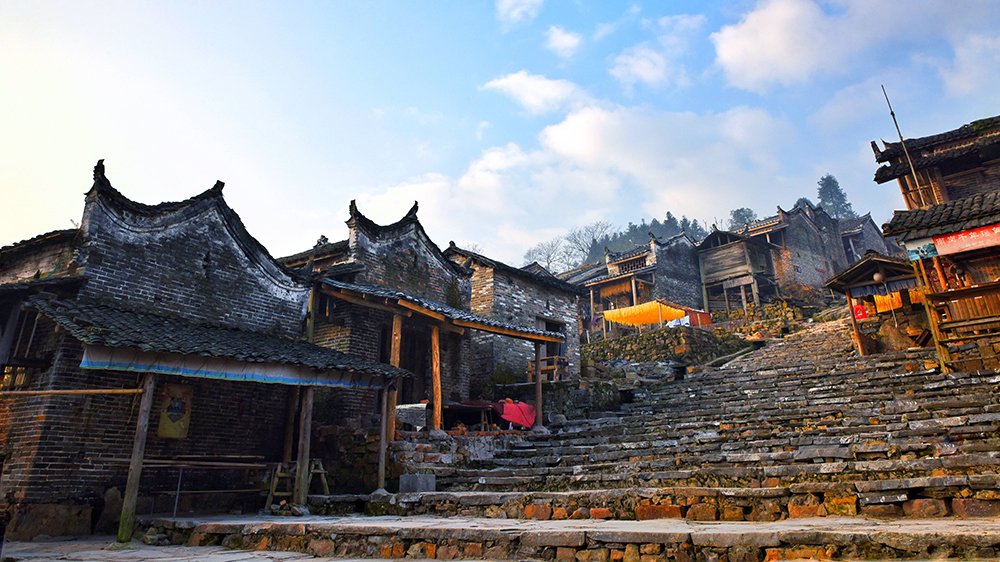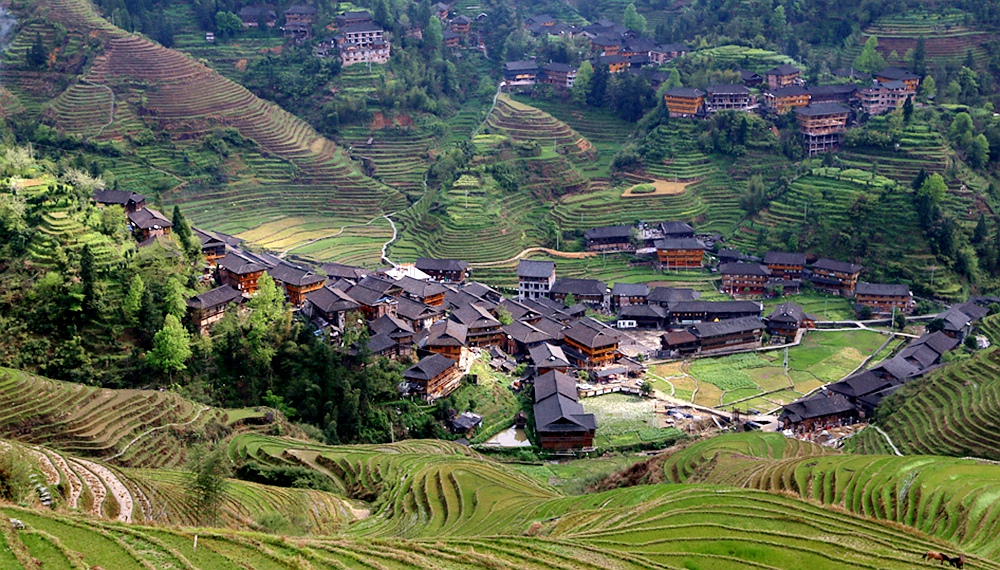Located in Lianshan Yao Autonomous County, Qingyuan City, Guangdong Province, Liannan Yao Village is the most complete, largest and most distinctive ancient Yao settlement group in China, known as "China's First Yao Village". It is home to the Pai Yao branch of the Yao ethnic group, who have preserved their traditional way of life and cultural customs for thousands of years.
Liannan Yao Village mainly consists of Nangang Millennium Yao Village and Youling Ancient Village. Nangang Yao Village was founded in the Song Dynasty, with a history of over a thousand years. Situated at an altitude of 803 meters, it once had more than 700 houses, over 1,000 households, and 7,000 residents at its peak, earning it the name "Leader's Row". The ancient village is built on the mountainside, with houses stacked in layers, crisscrossed stone paths, and a clear hierarchy, forming a typical Yao settlement pattern.


The Yao people have a long history and splendid culture. As an important inheritance site of Yao culture, Liannan Yao Village preserves rich ethnic cultural heritage, including unique language, clothing, architecture, music, dance, festivals, and living customs. The Yao people here are warm and hospitable, still maintaining a simple way of life, making it an excellent window to understand China's ethnic minority cultures.
Liannan Yao Village is not only a national AAAA-level tourist attraction but also a Chinese Historical and Cultural Village, a Traditional Chinese Village, and has been included in the National Intangible Cultural Heritage Protection List. In recent years, while protecting traditional culture, Liannan Yao Village has gradually developed into a famous cultural tourism destination, attracting more and more tourists to explore the charm of the thousand-year-old Yao culture.
Liannan Yao Village consists of several ancient villages, each with its unique style and cultural characteristics. Here are detailed introductions to the main attractions:
Nangang Millennium Yao Village is the most representative ancient village in Liannan Yao Village, founded in the Song Dynasty with a history of over a thousand years. Built on the mountainside with houses stacked upward, it preserves the complete traditional Yao architectural style and village layout. Inside the village, there are ancient buildings, stone paths, village gates, and walls from the Ming and Qing Dynasties, making it a living fossil of Yao historical culture.
Youling Ancient Village is another important Yao settlement in Liannan, famous for its rich Yao song and dance culture, known as "Hometown of Chinese Folk Art". The Yao people here have preserved complete traditional songs and dances, such as the long drum dance and love song duets, and often hold large-scale folk performances. The village features unique architectural styles with stilt houses built on the mountainside in an orderly fashion.
The Liannan Yao Museum is an important window to understand Yao culture. It houses a large collection of Yao cultural relics, including costumes, silver ornaments, production tools, daily necessities, and religious artifacts, systematically displaying the history, culture, art, and living customs of the Yao people. The museum building has a unique style, blending traditional Yao architectural elements with modern design concepts.

The terraced fields surrounding Liannan Yao Village are masterpieces cultivated by generations of Yao people. These层层叠叠的梯田 extend from the foot of the mountain to the mountaintop, complementing the ancient village architecture and forming a unique rural landscape. In spring, the terraces glisten with water; in summer, they are lush with greenery; in autumn, they turn golden; and in winter, they are covered in white, offering different scenery in each season and making it a paradise for photographers.
Panwang is the ancestor of the Yao people, and Panwang Ancient Temple is an important religious activity site in Liannan Yao Village with a history of several hundred years. The temple has a unique architectural style, blending traditional Yao architecture with religious elements, and houses statues of Panwang and other Yao deities. During the Panwang Festival on the 16th day of the 10th lunar month, grand sacrificial activities are held here, creating a spectacular scene.
Yao silver ornaments are an important part of Yao culture, known for their exquisite craftsmanship and unique designs. The silver workshops in Liannan Yao Village preserve traditional silver-making techniques, allowing visitors to watch craftsmen make silver ornaments up close, learn about the cultural connotations of silver ornaments, and even customize or purchase exquisite silver ornaments as souvenirs.
Liannan Yao Village is a living inheritance site of Yao culture, preserving rich and diverse traditional cultural elements, including language, clothing, music, dance, and handicrafts, forming a unique Yao cultural system.
Yao costumes are colorful, with red, black, and blue as the main colors, featuring exquisite embroidery and rich patterns with strong ethnic characteristics. Men wear front-buttoned shirts, while women wear collarless embroidered clothes, unique headwear, and silver ornaments. Different branches of the Yao ethnic group have distinct costume styles, which are important carriers of Yao culture.
The Yao people are known for their love of singing and dancing, with rich song and dance culture. The long drum dance is the most representative dance of the Yao ethnic group, famous for its vigorous movements and passionate rhythms. Yao folk songs have beautiful melodies and rich content, reflecting the lives, love, and labor scenes of the Yao people, often performed during festivals and celebrations.
Yao handicrafts are exquisite in craftsmanship, including embroidery, silver ornament making, weaving, and bamboo weaving. Among them, Yao embroidery is famous for its exquisite patterns and complex stitching techniques, while silver ornament making features unique craftsmanship and beautiful designs, with high artistic value and cultural connotations, forming an important part of Yao culture.
Yao wedding customs are unique and grand, preserving many ancient traditional practices. The process of proposing, betrothal, and迎娶 all have specific rituals and customs. Weddings feature song and dance performances, antiphonal singing, and other activities, creating a lively atmosphere that reflects the Yao people's emphasis on marriage and yearning for a better life.
The festivals in Liannan Yao Village are rich and colorful, reflecting the religious beliefs, living customs, and cultural traditions of the Yao people, providing excellent opportunities to experience Yao culture:
| Spring (Mar-May) | Warm and pleasant, moderate number of tourists |
| Summer (Jun-Aug) | Lush greenery, cool refuge, occasional rainfall |
| Autumn (Sep-Nov) | Clear weather, charming autumn scenery, perfect for photography |
| Winter (Dec-Feb) | Mild climate, fewer tourists, opportunity to experience Yao New Year |
There are several restaurants in the Yao village serving authentic Yao cuisine, such as Yao-style cured meat, bamboo tube rice, stuffed tofu, and glutinous rice wine. Yao cuisine features mountain flavors with unique tastes, worth trying. The average cost is about 30-60 yuan per meal, available at local guesthouses or restaurants.
There are various accommodation options in the Yao village, from traditional Yao guesthouses to modern hotels, with prices ranging from 100-500 yuan. Many guesthouses are renovated from traditional stilt houses, preserving Yao architectural characteristics, and some offer panoramic views of the Yao village. Booking in advance is recommended during peak seasons.
Lianshan Yao Autonomous County, Qingyuan City, Guangdong Province
Approximately 800 meters
Subtropical monsoon climate
Ancient village architecture, Yao culture, terraced landscape
Nangang Yao Village, Youling Ancient Village, etc.
Approximately 5,000 (mainly Yao ethnic group)
March-May, September-November
Long drum dance, Yao embroidery, folk activities
Weather is clear, suitable for traveling. Recommended to take sun protection measures and carry drinking water.
Liannan Yao Village is mainly inhabited by the Pai Yao branch of the Yao ethnic group. Pai Yao gets its name from the row-like arrangement of houses and is one of the important branches of the Yao people, with unique language, culture, and customs.
The long drum dance is the most representative dance of the Yao ethnic group, originating from the legend of commemorating the Yao ancestor Panwang. Dancers hold long drums, move vigorously with明快 rhythms, and it is an important symbol of Yao culture.
Yao costumes are colorful with exquisite embroidery. Men wear front-buttoned shirts, while women wear collarless embroidered clothes, unique headwear, and silver ornaments. They are an important part of Yao culture.
Yao cuisine features mountain flavors, including cured meat, bamboo tube rice, stuffed tofu, and glutinous rice wine. With unique tastes and traditional cooking methods, it has strong ethnic characteristics.
The traditional buildings in the Yao village are stilt houses, built on the mountainside with wood. The lower part is elevated, and the upper part is for living, adapting to the mountain terrain while preventing moisture and insects, reflecting the wisdom of the Yao people.